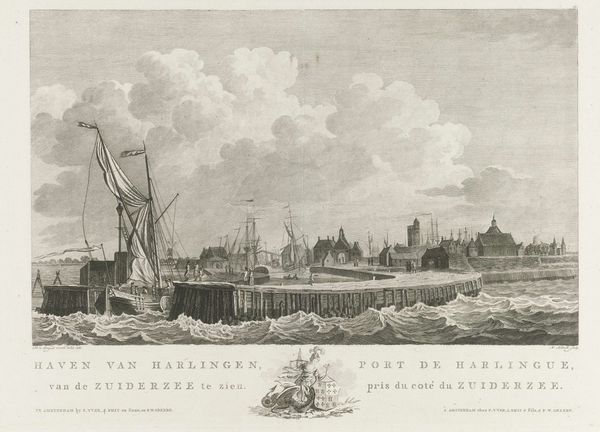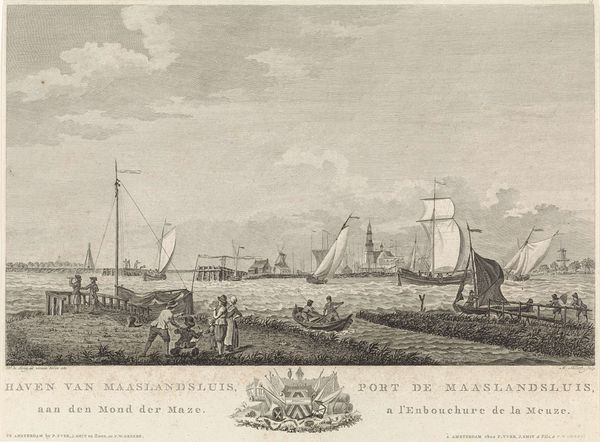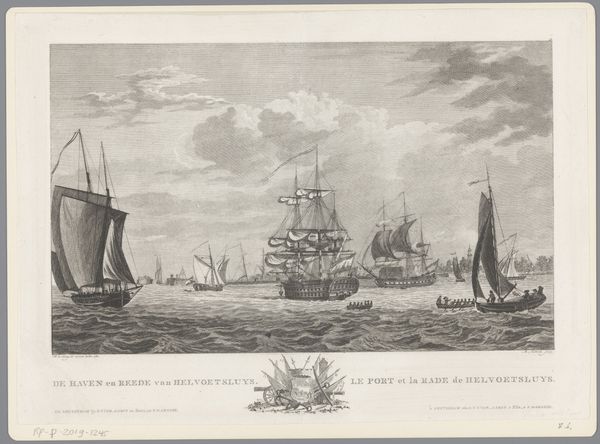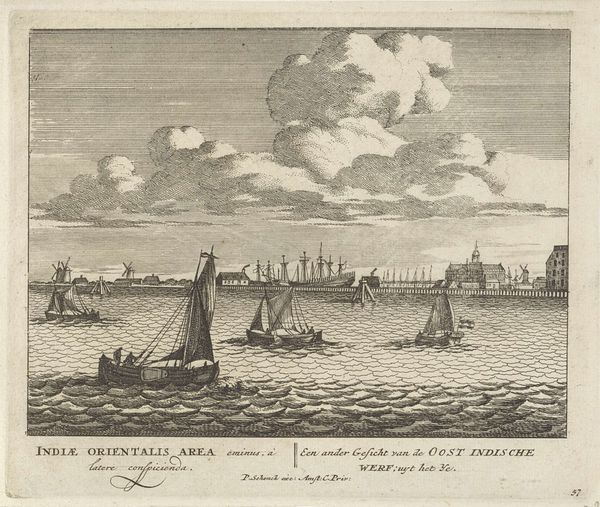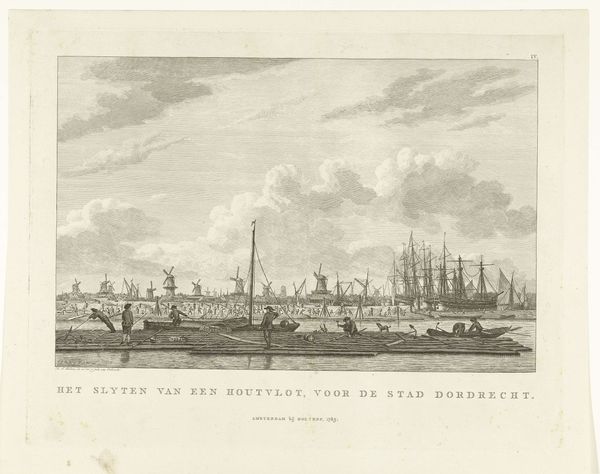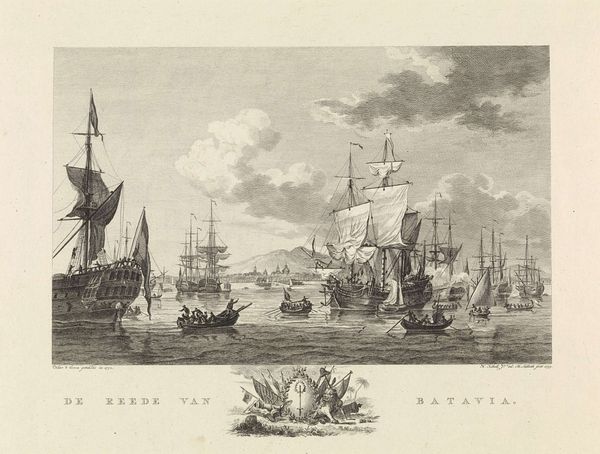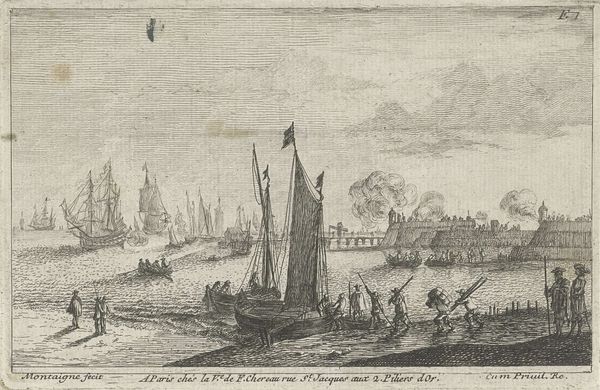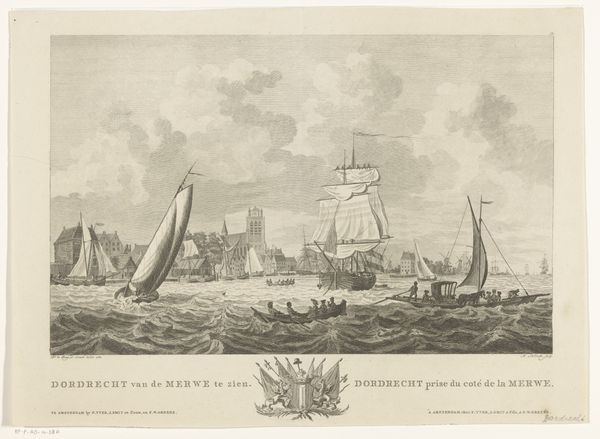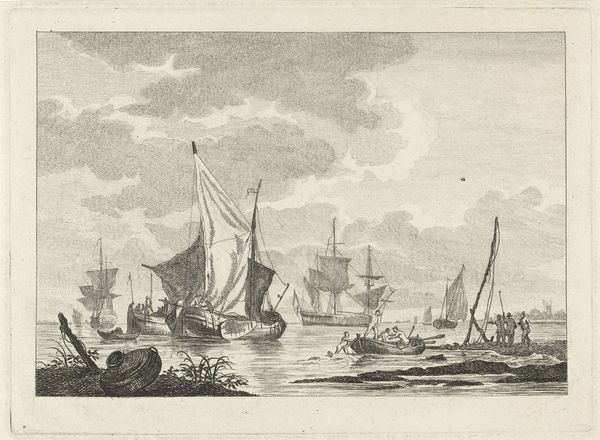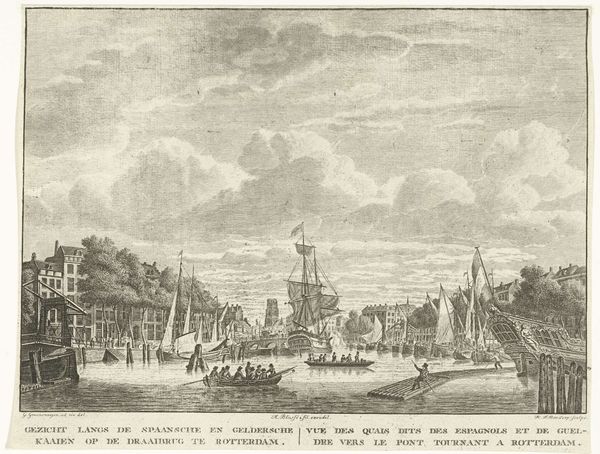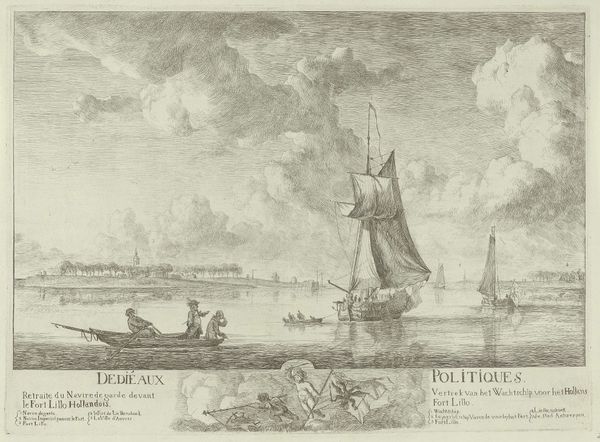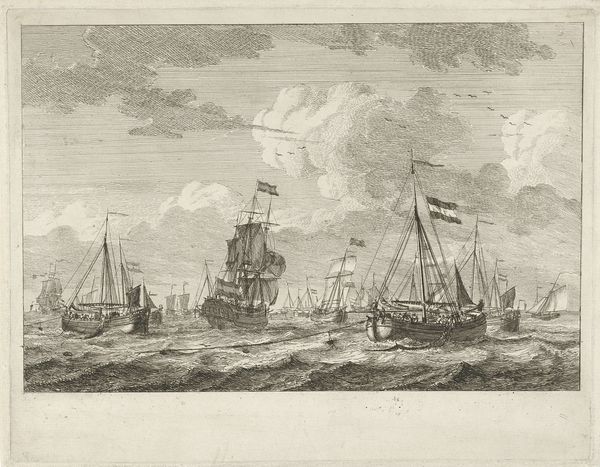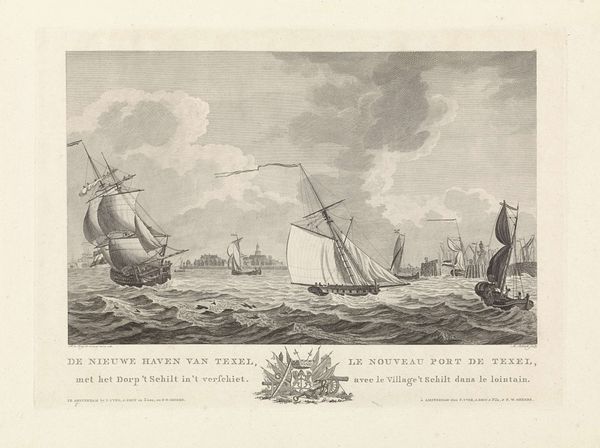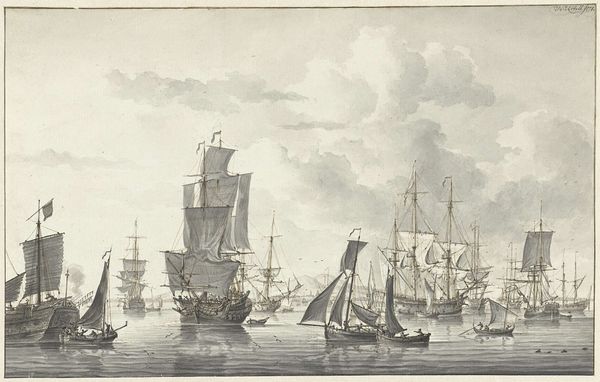
Dimensions: height 263 mm, width 347 mm
Copyright: Rijks Museum: Open Domain
Editor: This is Mathias de Sallieth's "View of the Harbour of Vlissingen," made between 1779 and 1787. It's an engraving, giving it such a detailed, almost documentary feel. The water looks so choppy, it makes me wonder about the day-to-day lives of the people depicted. What symbols stand out to you in this piece? Curator: Well, immediately the windmill strikes me. Not just as a literal marker of place, but as an enduring symbol of Dutch ingenuity and the constant battle against the sea. Its placement suggests the ambition to harness nature. Notice its silhouette dominating the harbour fortifications. What memories do such structures trigger? Editor: That's fascinating. The ships also catch my eye—they represent trade and exploration. How might they function as symbols in this engraving? Curator: Indeed, these aren't merely vessels. They speak of voyages, commerce, and perhaps even of conflict. Consider the flags absent from their masts. How does that change the story being told? What replaces it in symbolic terms? Editor: That's an interesting question... it invites viewers to create their own narrative about the journeys these ships are about to embark on, doesn't it? Almost like an open invitation. Curator: Precisely. And consider the inclusion of the canon at the base of the engraving - what feelings and emotions does it incite as we interpret the imagery. What message do these juxtaposed symbols attempt to reveal? Editor: Wow, the strategic placement of these symbols does create an ambiguous and ever evolving image, that transcends merely showing a moment in time! Thanks! Curator: My pleasure. Understanding visual language enhances our connection to history and how societies communicate values.
Comments
No comments
Be the first to comment and join the conversation on the ultimate creative platform.
